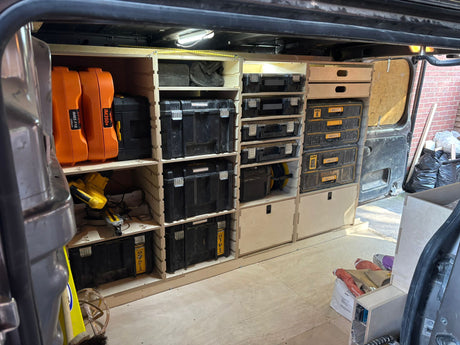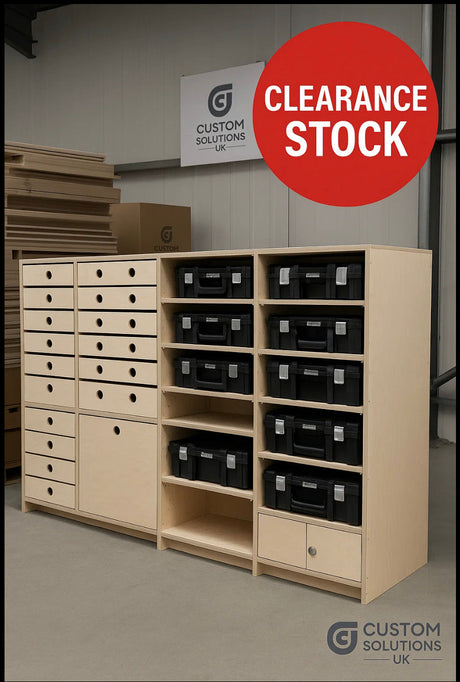How We Build Custom Racking for Small Vehicles
For tradespeople, small vans such as the Peugeot Expert Compact or Volkswagen Caddy provide enough space to carry essential tools and equipment while maintaining agility on the road. However, efficient use of the limited space, typically around 2.64 to 3.51 cubic meters, requires careful planning and organisation. When these vans are racked out correctly, they can hold a surprisingly large amount of equipment, saving you time and hassle on the job.
This is a customers image we are currently working on to create the ultimate SET up for a plumber in a small van. Ill include a link to this when we get it finished should be this week 01-09-24.

The Problem with Open Shelving
One of the biggest mistakes tradespeople make is opting for open shelves where tools and parts can be thrown in without any organisation. While it may seem convenient, this approach wastes space and makes it hard to find items when needed. With such a limited area in small vans, every inch counts. You want to avoid empty spots and unused gaps, especially in awkward corners.
Systemised Storage: The Key to Efficiency
To make the most of your small van, start by systemising your tools and materials into dedicated storage spaces. A well-thought-out racking system ensures everything has its place, from your most-used hand tools to heavier, less frequently used equipment. Modular systems like Festool Systainers or DeWalt Tstack boxes are excellent for this, as they can be stacked and accessed easily without wasting space. Remember we build system for all toll brand and not just limited by these i mentioned.
Access: Convenience Without Crawling
One of the main challenges with small vans is limited access. It’s frustrating having to crawl into the back just to retrieve a single tool. That’s why a good racking system should allow you to access everything from the outside. With lighter items placed near the front and heavier tools or materials stored toward the back, you can make full use of your van's space without creating safety issues or back strain.
For small vans with twin sliding doors, like the Volkswagen Caddy or Peugeot Expert, access is even better. With three entry points (rear and two side doors), you can reach any part of the vehicle easily. It also allows you to optimise storage around these access points, positioning frequently used tools within easy reach near the side door while keeping rarely needed items further back.
Optimising Side Door Storage
Side doors are perfect for storing your day-to-day hand tools or smaller parts that need to be accessed regularly. With approximately 750mm wide of space for side door access, a customised unit can house both modular storage systems like Festool Systainers or DeWalt Tstack cases, alongside large, medium or small drawers
For example, you can create a vertical unit that fits your stacking boxes on one side, leaving about 300-400mm for additional drawer storage. This allows you to store everything from power tools to fittings in an organised manner, with quick access right from the side door. Larger and less frequently used parts can then be stored in the rear. Image below not full of drawers but you can see there is a lot of storage that can be created.

Conclusion
The secret to maximising the space in your small van lies in how you organise it. By investing in a well-planned racking system and using modular storage solutions, you can transform a van with just 2.64 to 3.51 cubic meters of space into a mobile workshop. With efficient organisation and multiple access points, you’ll have all your tools at hand without having to compromise on space or safety.
Ill put a link here to the Vehicle sizes of a Peugeot Expert Compact and out video on Caddy sizes. to give you a idea what we can come up with. Im personally working on some design SETS for the smaller vehicles, Drop in the comment what you would like to see ill make sure to add it to our catalog. This will be a on going post.









